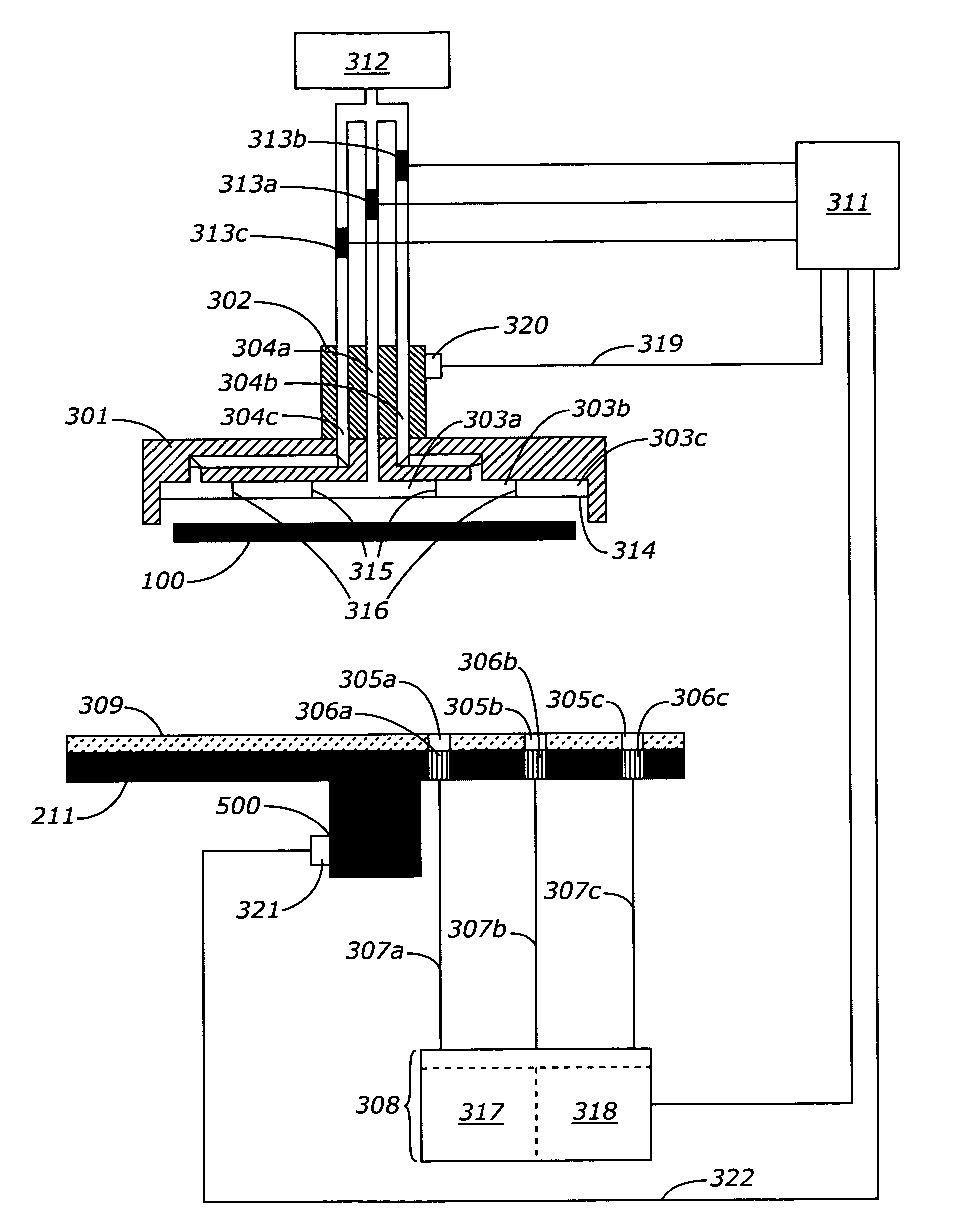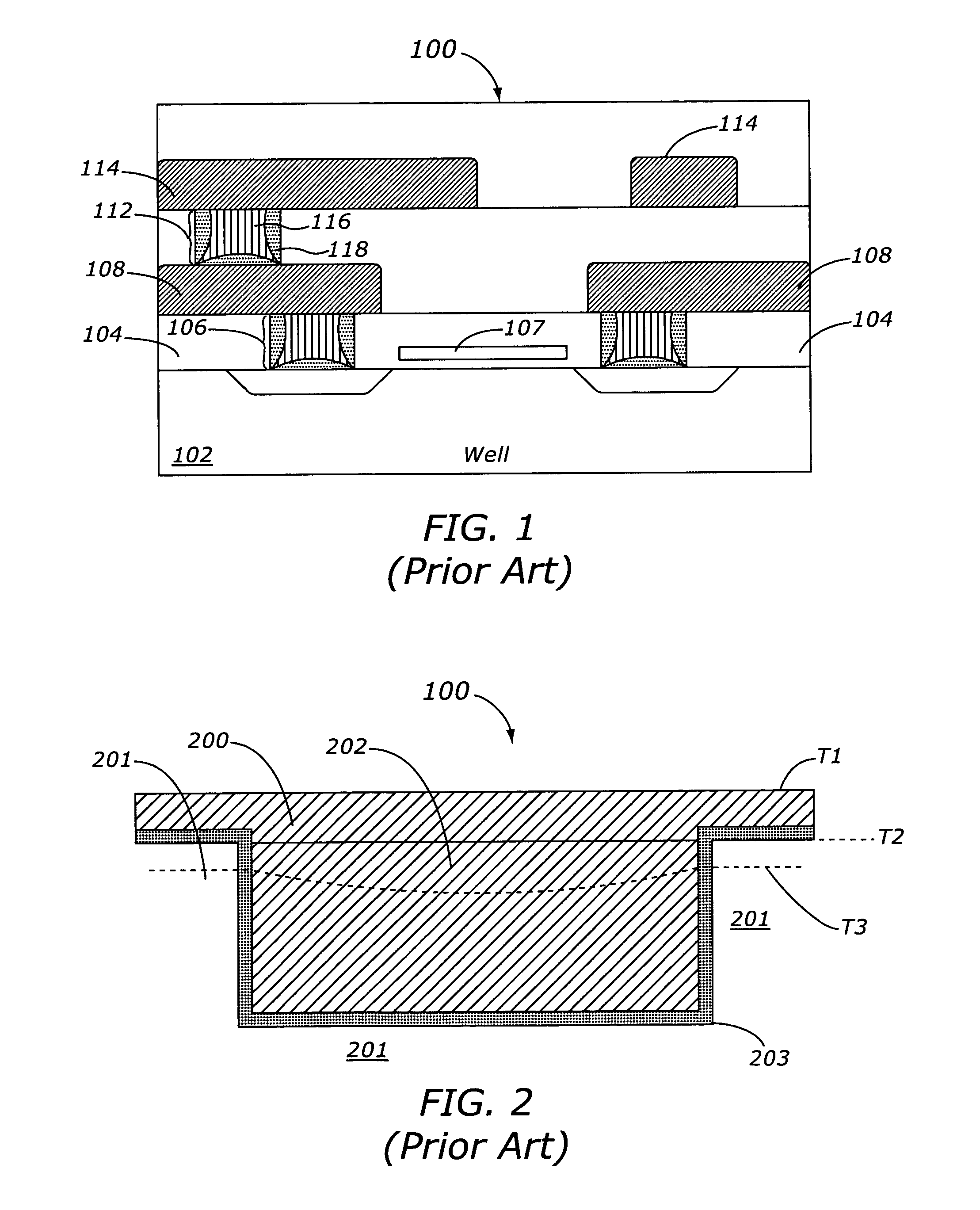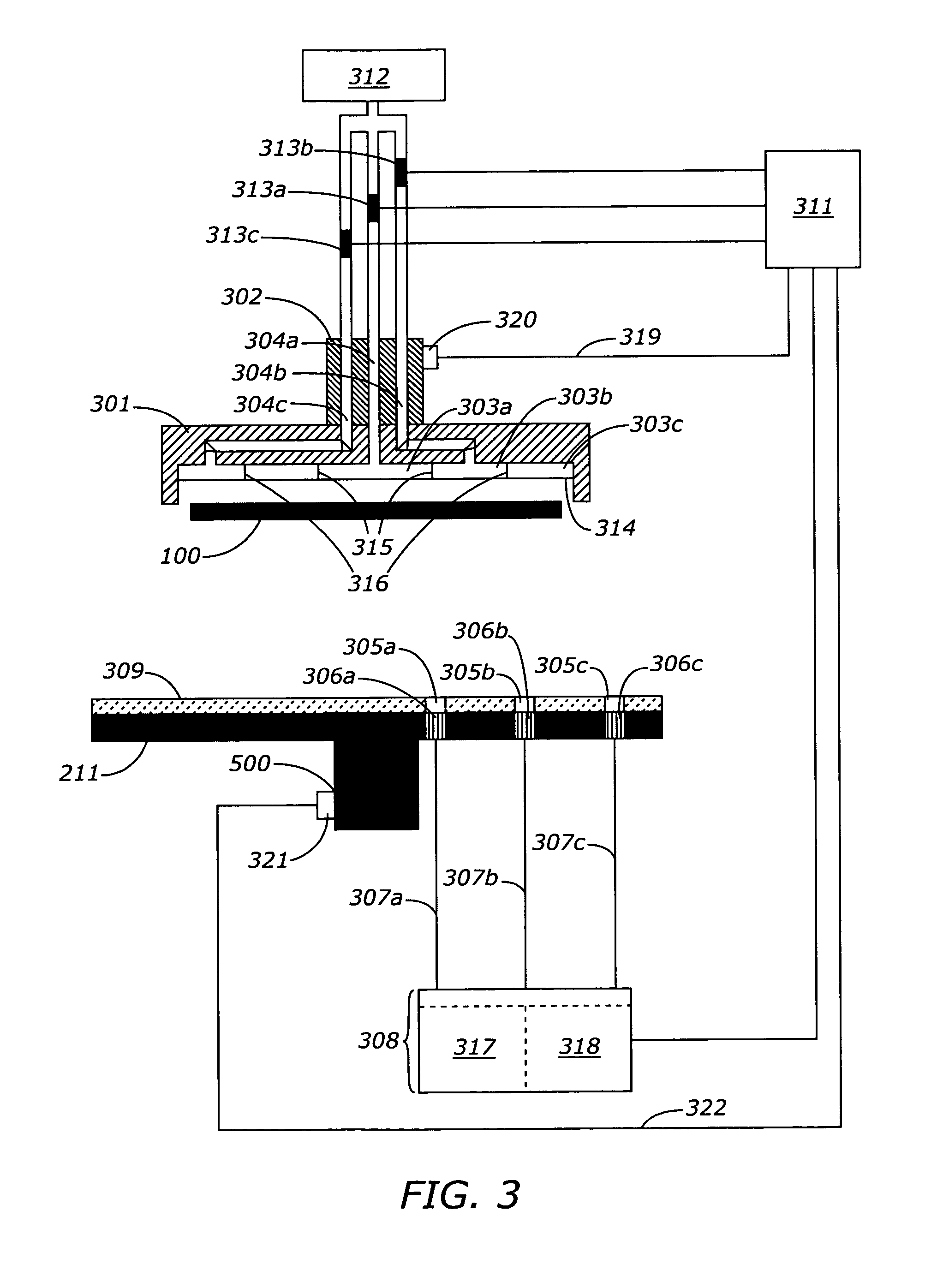Detection system for chemical-mechanical planarization tool
a technology of chemical mechanical and planarization tool, which is applied in the direction of manufacturing tools, semiconductor/solid-state device testing/measurement, lapping machines, etc., can solve the problems of poor optical resolution of subsequent photolithography processing steps, both faces of the wafer to be extremely rough, and poor optical resolution of non-planar surfaces. , to achieve the effect of preventing the printing of high-density lines, poor optical resolution
- Summary
- Abstract
- Description
- Claims
- Application Information
AI Technical Summary
Problems solved by technology
Method used
Image
Examples
Embodiment Construction
[0022] The following detailed description is merely exemplary in nature and is not intended to limit the invention or the application and uses of the invention. Furthermore, there is no intention to be bound by any expressed or implied theory presented in the preceding technical field, background, brief summary or the following detailed description.
[0023] CMP of copper will become one of the most common and critical chemical mechanical planarization processes when the copper interconnect technology starts to dominate the fabrication of integrated circuits. FIG. 2 illustrates some of the potential problems if excessive overburden is removed, in this case a barrier layer 203, from the front surface of a wafer. At time T1 a layer of deposited copper 200 remains on the wafer. The copper layer is removed with a CMP step exposing barrier layer 203. In general, barrier layer 203 is deposited before copper 200. Barrier layer 203 forms a layer on the bottom and sidewalls of a cavity, via op...
PUM
| Property | Measurement | Unit |
|---|---|---|
| wavelength | aaaaa | aaaaa |
| wavelength | aaaaa | aaaaa |
| wavelength | aaaaa | aaaaa |
Abstract
Description
Claims
Application Information
 Login to View More
Login to View More - R&D
- Intellectual Property
- Life Sciences
- Materials
- Tech Scout
- Unparalleled Data Quality
- Higher Quality Content
- 60% Fewer Hallucinations
Browse by: Latest US Patents, China's latest patents, Technical Efficacy Thesaurus, Application Domain, Technology Topic, Popular Technical Reports.
© 2025 PatSnap. All rights reserved.Legal|Privacy policy|Modern Slavery Act Transparency Statement|Sitemap|About US| Contact US: help@patsnap.com



